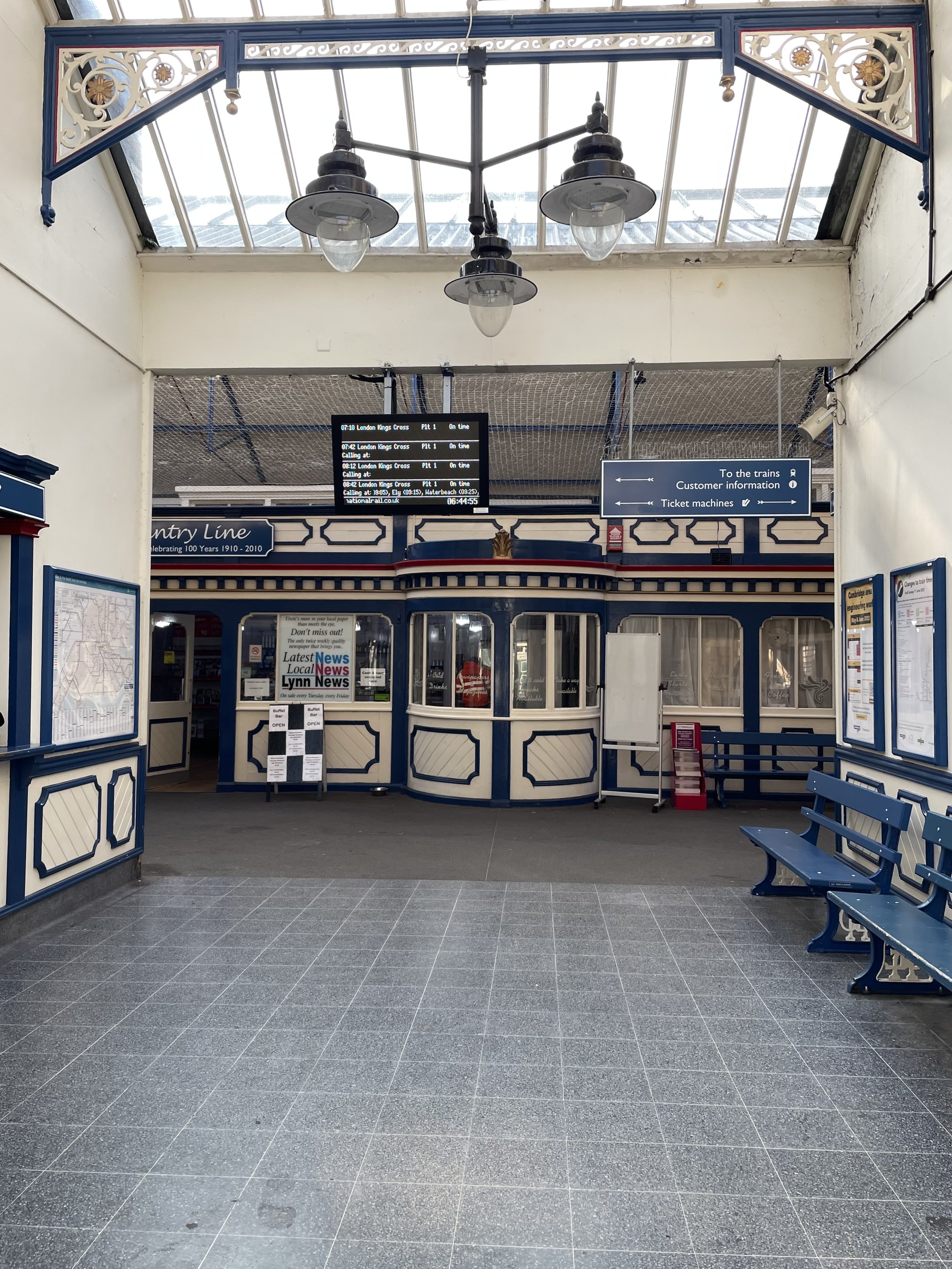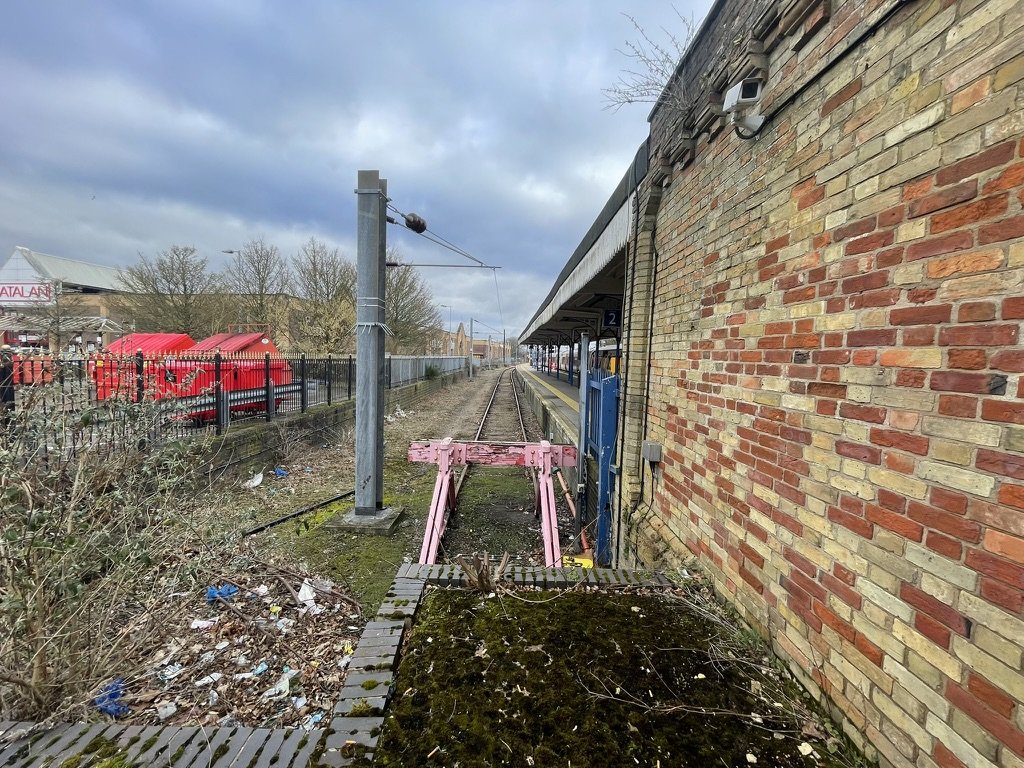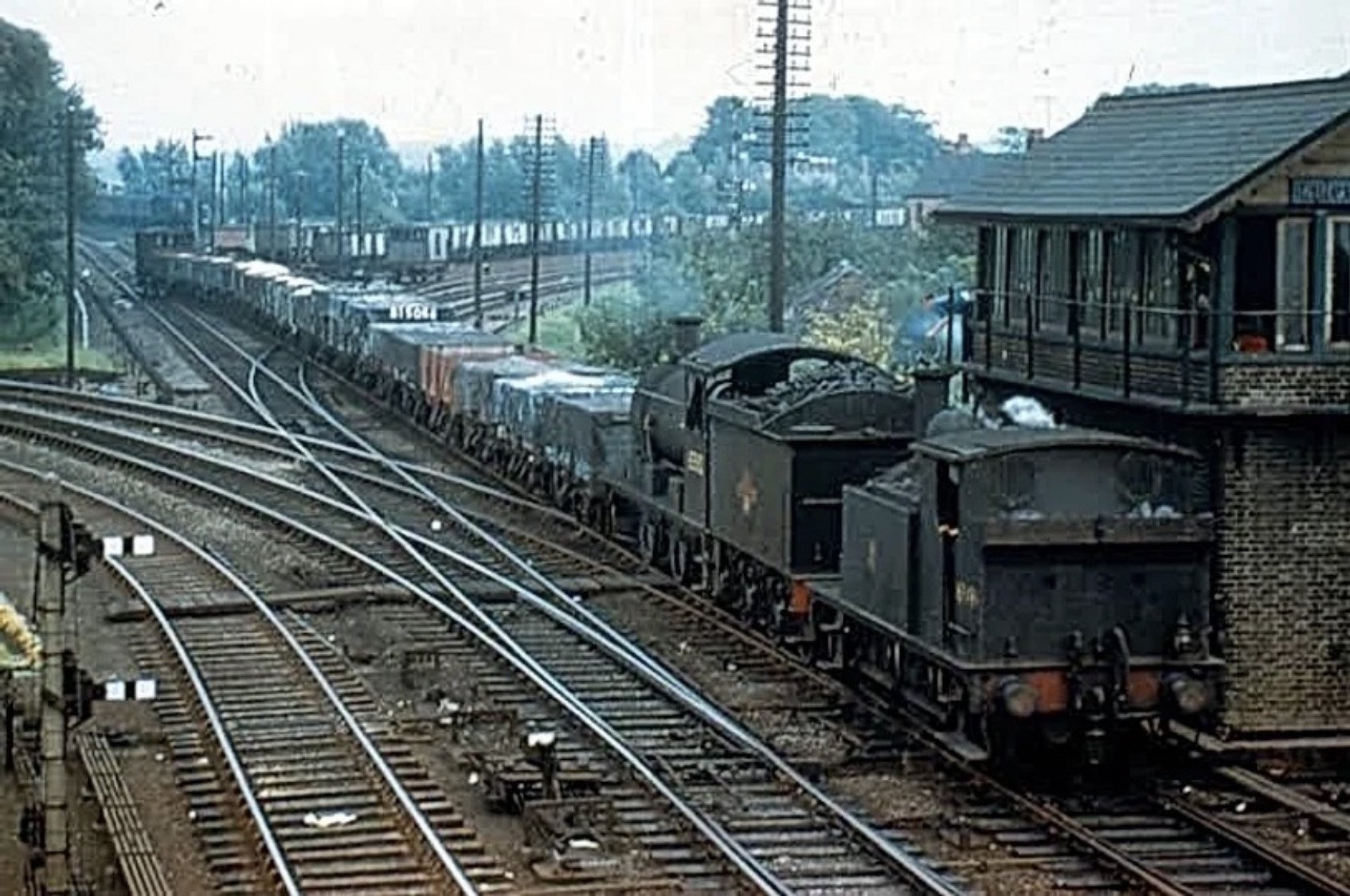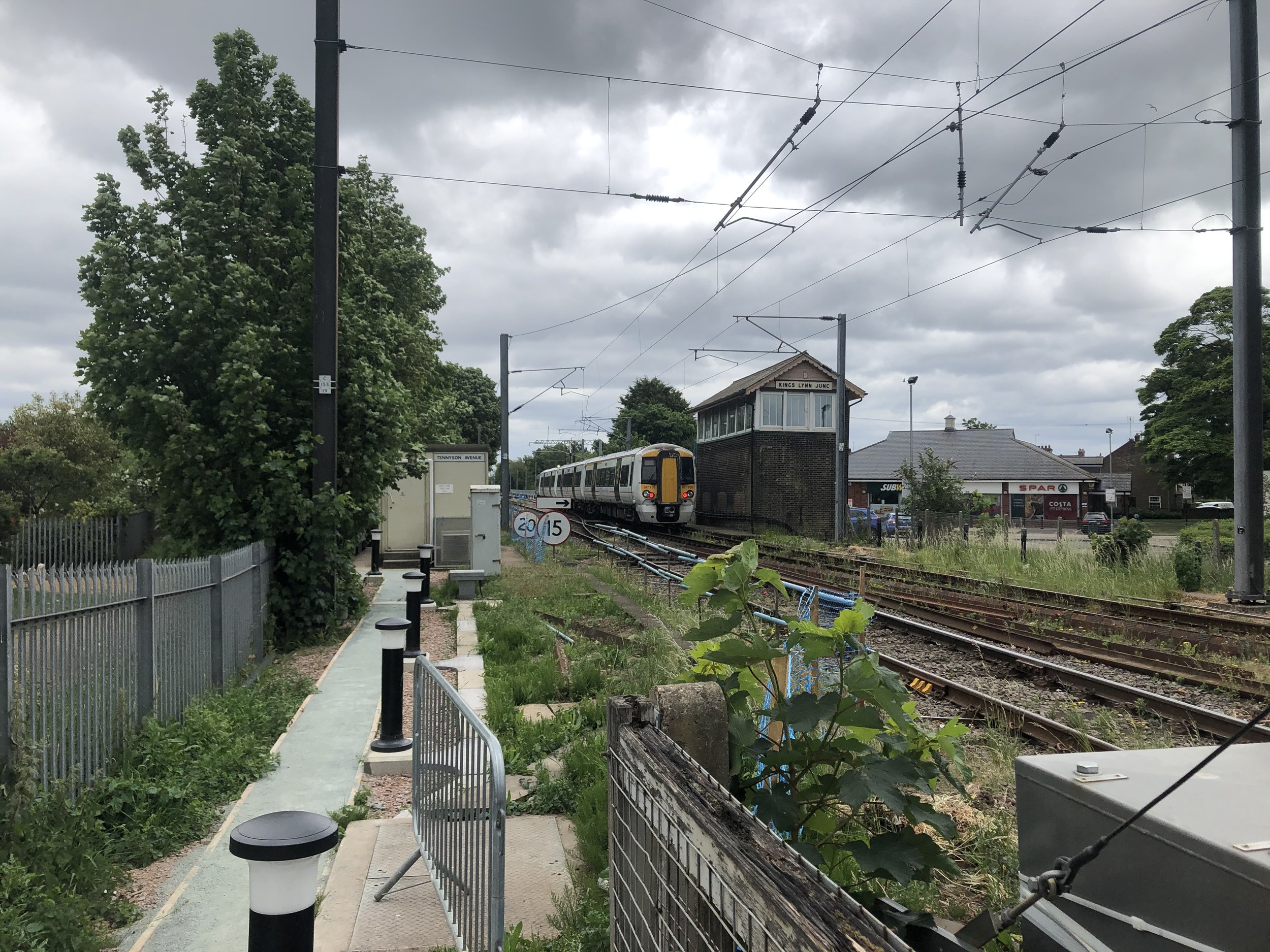KING’S LYNN TO MIDDLETON TOWERS

To navigate through the route, kindly make use of the navigational icons located below that correspond to each part of the route.
King’s Lynn Station
Located on the East Coast, this port and market town was called Bishops Lynn in the 15th century.
The origins of Bishops Lynn date back to the 10th century, but the first recorded mention of it was in the 11th century.
King's Lynn Station was in Norfolk, the original station opened in 1846 after the Lynn, Ely railway line opened.
Back in the day, this was just a basic wooden structure.
The Dereham line was created during the years 1846 & 1848.
Another branch, starting from Watlington (previously called Magdalen Road), began operating in 1848 and provided transportation services to Wisbech and March, also originating from King's Lynn. Furthermore, the Hunstanton line originating from King's Lynn was established in 1862, and the South Lynn M&GN station was built in 1865.
Then in 1871, several companies collaborated to create a more durable station, resulting in the present-day terminal we now witness.
The recently built station now has two island platforms, each with four dead-end lines.
It has replaced the old wooden structure that previously stood in its place.
Even though it is a Terminus, King's Lynn used to see many trains continuing to Hunstanton from the Lynn-Ely Line and the M&GN at South Lynn via a shuttle line, which is also covered on this website.
The summer months were particularly busy, with restaurant cars and royal services heading towards the Norfolk coast.
At the end of King's Lynn station, there was a vast goods yard that could only be accessed through the King's Lynn junction by the signal box. Furthermore, a junction existed where the railway connected to the Lynn Docks branch.
Between the goods lines and the bay platforms lay King's Lynn's engine sheds. This brick-built structure featured four roads and accommodated a variety of engines, including numerous royal engines. By the 1950s, the sheds were capable of accommodating many locomotives. However, in 1959, the sheds were closed to steam locomotives.
Access to the sheds was only possible through the junction located near the signal box.
During the early days of the station, there was a signal box located at the end of the platforms in King's Lynn, along with a significant semaphore signal system.
As the trains left King's Lynn, they passed by the engine sheds and goods yards before reaching King's Lynn Junction. At the junction, they continue straight ahead, crossing underneath the footbridge. On the left, you can see the Hunstanton Branch, while the Ely-Cambridge line heads off to the right. Now on its dedicated line, the Dereham line quickly heads towards its next station, Middleton Towers, through open countryside.
At the junction, there was the second signal box, King’s Lynn Junction Box. The King’s Lynn Junction box was said to have housed an 80-lever frame.
When writing this page, King’s Lynn still operates at a working mainline station with services towards Ely, Cambridge and London with hourly services to the capital.
Currently, there is only one signal box remaining. There have been discussions about establishing a central control centre at Cambridge, which would render all signal boxes obsolete. It is still being determined how long the remaining signal box will continue to be operational.
The Goods Yard and engine sheds have undergone significant changes, with most of it being torn down and replaced by a supermarket and retail establishments. However, a portion of it remains in use as a turnaround point for freight services headed to Middleton Towers.
The Hunstanton Line was closed in 1969, just one year after the Dereham Line shut down. Similarly, the Wisbech and Watlington branch was closed around the same time as the Dereham Line.
At present, the segment of the former Dereham railway line leading up to Middleton Towers is utilised as a freight line catering to the needs of the sand quarry.
In 2020, a portion of the old Dereham line near King's Lynn junction was renovated to accommodate stabling points for storing 8-car units.
1846 the Lynn Ely line opens with King’s Lynn wooden-built station.
1846-1848, The Lynn to Dereham railway line opened with King’s Lynn wooden built station.
1862, the Lynn Hunstanton Railway opened.
1865, the M&GN South Lynn Station opened.
1871 The station that is still in use today opened.
1911, the station changed its name from Lynn to King's Lynn.
1959 The M&gnjr line closes.
1968, the Dereham branch closes.
1969 May, the Hunstanton branch closes.
1992, the line to now London King's Cross is electrified between London King's Cross & Cambridge.
King’s Lynn station Layout Maps
Thanks to the ©National Library of Scotland.
Kings Lynn station aerial
Views past & present
I would like to express my gratitude to Historic England for providing the Embed codes that enabled me to use the aerial photos displayed below.
Thanks to Historic England for the aerial photo. Please click on the photo for a link to the source page.
Photographer unknown
Thanks to Historic England for the aerial photo. Please click on the photo for a link to the source page.
King’s Lynn station past & present
King’s Lynn railway station in the early 1900s
King’s Lynn railway station roughly in the late 1960s
King’s Lynn railway station Photographed in 2020
King’s Lynn station Foyer the year is unknown but in the Days of LNER with destinations to Dereham,Hunstanton,Wisbech,March & London Liverpool Street.
Sourced from FaceBook Under licence Credit-Photographer and year unknown
King’s Lynn station foyer and cafe in 2023
"Here are a few pieces of railway memorabilia on display at King's Lynn."
King’s Lynn railway platforms and goods area from the past.
This photo shows a steam excursion train arriving at King's Lynn during the 1950s. It is believed that this train was the Hunstanton excursion service. Additionally, the image features the Signal box and one of the semaphore signals.
Dereham or Hunstanton Bound service is about to depart from King’s Lynn.
King’s Lynn station’s sidings once occupied the present-day supermarket car park and fuel station.
Middleton Towers bound service at the King’s Lynn turnaround point.
©Martin Addison / Kings Lynn-Wikimedia
King’s Lynn railway station Platforms & freight sidings present times.
In the past, Dereham trains used Platform 2 at King’s Lynn station for departures. Trains to Hunstanton also departed from this platform. Currently, Platform 2 is reserved for stable trains and peak-time departures to London King’s Cross. Platform 1 is the most frequently used platform for London-bound services at King’s Lynn.
The Lynn Dereham line is still in use as far as Middleton Towers and as seen here the freight service uses the old King’s Lynn Docks branch line as a turnaround point.
The left-hand track is the main Lynn London bound track whilst the track to the right is where the freight services head towards Middleton Towers
King’s Lynn Junction
The Dereham line can be seen heading straight off to Middleton Towers.
Kings Lynn Junction Historic Maps
Thanks to the ©National Library of Scotland.
Once departing from King’s Lynn station, the trains swiftly approach Kings Lynn Junction, where the Docks branch intersects just before the Tennyson Avenue level crossing. At this junction, the Hunstanton line veers off to the left, followed by the Lynn, Ely, and Cambridge line to the right. The Dereham-bound line continues on a southeast trajectory towards Middleton Towers.
A freight train with double engines has just arrived at King's Lynn junction from Middleton Towers via the Dereham branch.
A freight train, specifically identified as 37023, is currently on its return journey after loading silica sand at Middleton Towers.
Thanks to Martin Addison via Geograph
Attribution-ShareAlike 2.0 Generic(CC BY-SA 2.0)
King’s Lynn junction after the Hunstanton branch had been ripped up.
The King's Lynn Junction looks quite different in 2020 compared to the past. The Hunstanton branch junction is no longer present, and a considerable number of sidings from the Dereham branch have also disappeared.
The Dereham line, which appears to continue straight ahead, serves as a resting place for 8-car units that have been in operation between King's Lynn and Cambridge since 2020. Additionally, it is still utilized as a freight line up to Middleton Towers.
Off to Middleton Towers
The train continued on its route after passing Kings Lynn Junction, making its way to the next stop at Middleton Towers. A photograph of the area was captured in 2020 from the footbridge located at the Hardwick industrial estate.
The image shows the train track running alongside the estate, primarily used for freight transportation.
The Dereham line now passes under the A149 Bypass in-between the hospital and the Hardwick estate.
After passing under the A149 bridge, the railway line would have passed under the M&GN South Lynn to Fakenham line.
The cross-over bridge was just after the Second mile marker from King’s Lynn.
Thanks to the ©National Library of Scotland.
The Lynn Dereham line and the M&GN cross over bridge
When the Lynn to Dereham line was constructed in 1846, this bridge would not have been built. Initially, the Lynn Fakenham line diverged from King’s Lynn’s main station. Between 1885 and 1886, the Lynn avoiding line was constructed, diverting the Lynn Fakenham line from the main town station to a newly built station at South Lynn via a junction at Bawsey. Part of this construction involved this bridge and Gayton Road station.
The cross-over bridge maps showing the line before and after the construction of the Lynn avoiding line.
Thanks to the ©National Library of Scotland.
I want to express my gratitude to Andy F for sharing these amazing pictures with us through Geograph.
The initial image shows the Lynn Dereham line passing beneath the disassembled bridge that previously held the South Lynn to Gayton Road M&GN Train to Fakenham.
Lastly, there are two images of a farm crossing, which I assume were taken right after the bridge.
Attribution-ShareAlike 2.0 Generic(CC BY-SA 2.0)
The following images were provided by Alex Brammer from Middleton Towers Restoration Group, who are working towards restoring Middleton Towers Station.
©ALEX BRAMMER-MIDDLETON TOWERS RESTORATION GROUP
The following images were provided by Steve Heywood.
©STEVE HEYWOOD
After passing the cross-over bridge the Lynn Dereham railway line headed towards its next destination.
Middleton Towers Station.
Drone shots looking towards King’s Lynn.





















































